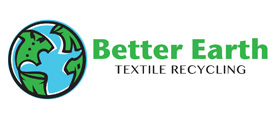More than half of collected clothing is recycled as secondhand clothing and sold to emerging countries worldwide. Through the efforts of Better Earth Textile Recycling and many other similar organizations, the world’s poorest people have access to the clothing they need.
Thanks to smart efficiencies and innovative equipment, an individual on the east coast of Africa earning just $200 a year can buy a pair of clean, gently used pants for just $.34 a pair. In Pakistan, sweaters can be purchased for about $.12 each — far less than the cost of mailing a letter. These prices include not only the garment, but transportation costs as well.
Overly worn or stained clothing is re-purposed to become wiping and polishing cloths for use in manufacturing and other industries. Cotton is made into rags or used to form a component for new high-quality paper. Knitted or woven woolens and similar materials are “pulled” into a fibrous state for reuse by the textile industry in low-grade applications, such as car insulation or seat stuffing. Other types of fabric is reprocessed into fibers for upholstery, insulation, and even building materials. Buttons and zippers are stripped off for reuse. Very little is left over at the end of the recycling process.
- The U.S. Environmental Protection Agency estimates that an average person throws away 81 lbs. of clothing every year.
- Clothing and household textiles currently make-up about 5% of the waste stream.
- Only 15% of textile materials are re-purposed — leaving 85% to end up in landfills.
- Combined, textile recycling organizations like BETR keep over 5 billion lbs. of waste out of landfills every year.
- More than 60% of recovered textiles are sent abroad to over 250 countries, creating hundreds of thousands of jobs worldwide.

